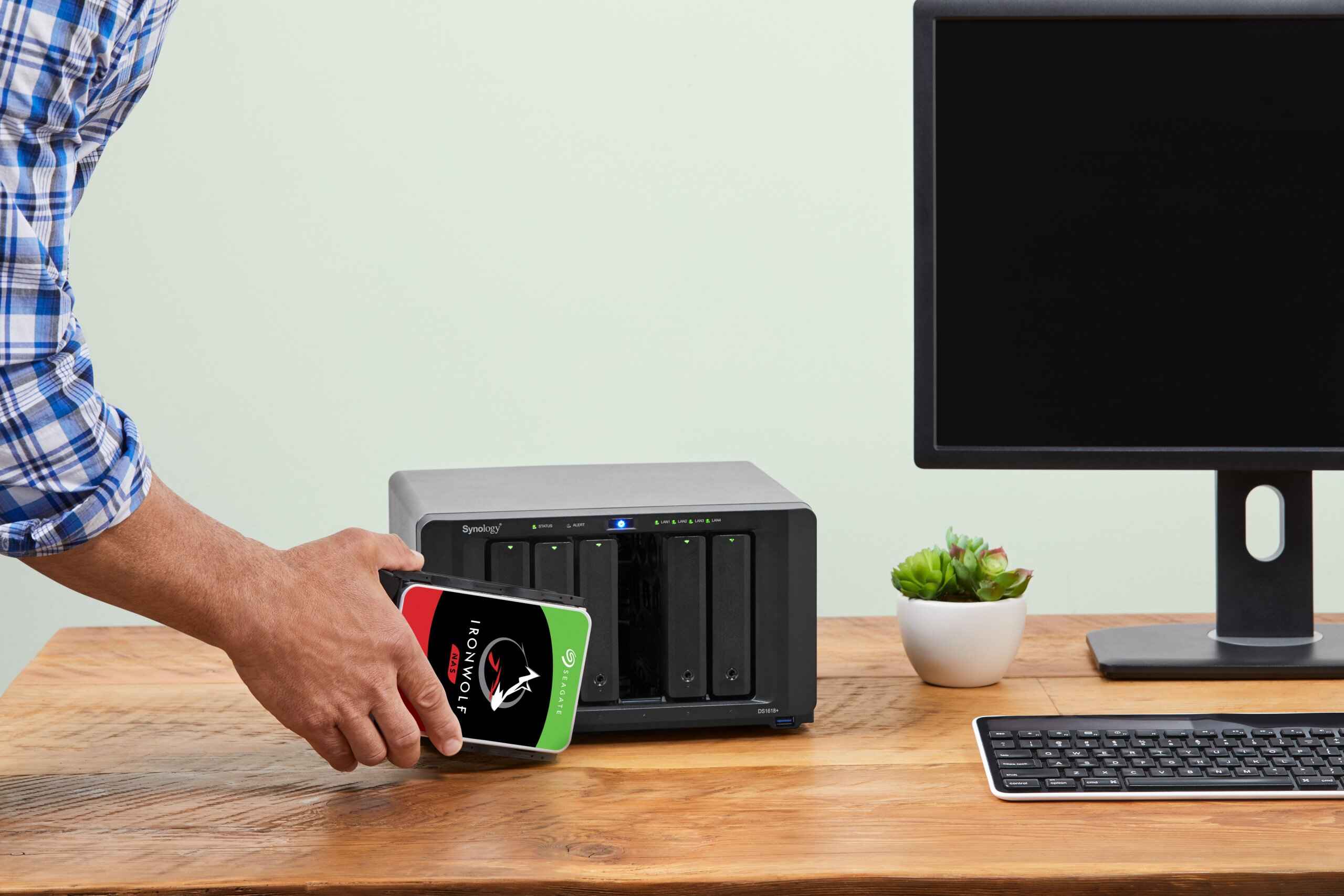Introduction
In today's digital age, the need for reliable data storage and backup solutions has become increasingly crucial. Network Attached Storage (NAS) devices have emerged as a popular choice for individuals and businesses seeking a centralized and secure means of storing and accessing data across a network. With the ever-growing volume of sensitive information, including documents, multimedia files, and system backups, safeguarding the contents of NAS devices has become paramount.
As the reliance on NAS continues to grow, so does the necessity for robust backup strategies. Online backup, also known as cloud backup, offers a convenient and secure method for safeguarding NAS data from potential risks such as hardware failure, natural disasters, and cyber threats. By entrusting the backup process to a reputable online service, users can enjoy peace of mind knowing that their critical data is protected and easily recoverable in the event of an unforeseen mishap.
Throughout this comprehensive guide, we will delve into the intricacies of backing up NAS devices online, exploring the importance of this practice, selecting the most suitable online backup solution, and implementing best practices to ensure the integrity and accessibility of backed-up data. Whether you are a home user with a personal NAS or an IT professional managing a networked storage infrastructure, the insights provided here will empower you to establish a resilient online backup strategy for your NAS, thereby fortifying your data against potential loss or corruption.
As we embark on this journey to demystify the process of backing up NAS online, let's delve into the core concepts of NAS and the pivotal role it plays in modern data management. Understanding the essence of NAS will lay a solid foundation for comprehending the significance of online backup and the subsequent steps involved in securing your valuable data.
Understanding Network Attached Storage (NAS)
Network Attached Storage (NAS) serves as a dedicated file storage device that provides local area network (LAN) nodes with file-based data storage services through a standard Ethernet connection. Unlike traditional file servers, NAS systems are designed with simplified functionality, allowing users to effortlessly access, manage, and share data within a network environment. NAS devices are available in various configurations, ranging from single-drive units tailored for home use to multi-bay systems engineered to meet the demanding storage requirements of businesses and enterprises.
One of the defining features of NAS is its ability to support multiple clients simultaneously, providing seamless access to files, documents, and multimedia content across diverse platforms and devices. This versatility makes NAS an ideal storage solution for collaborative work environments, multimedia streaming, and data backup operations. Moreover, NAS devices often incorporate advanced features such as RAID (Redundant Array of Independent Disks) for data redundancy, remote access capabilities, and robust security protocols to ensure the integrity and confidentiality of stored data.
By leveraging NAS, users can consolidate their data into a centralized repository, eliminating the need for individual storage devices and fostering efficient data management. This centralized approach streamlines data access and facilitates streamlined backup processes, enhancing data protection and accessibility. Furthermore, NAS systems can be seamlessly integrated into existing network infrastructures, offering scalability and flexibility to accommodate evolving storage demands without disrupting operational workflows.
As the digital landscape continues to evolve, NAS remains a cornerstone of modern data storage and management, catering to the diverse needs of individuals, businesses, and institutions. Understanding the fundamental principles of NAS empowers users to harness the full potential of this technology, optimizing data storage, accessibility, and collaboration within their respective environments. With this foundational knowledge in place, we can now explore the pivotal role of online backup in fortifying the resilience of NAS data, mitigating potential risks, and ensuring seamless data recovery in the face of adversity.
Importance of Backing Up NAS Online
The significance of backing up Network Attached Storage (NAS) online cannot be overstated in today’s data-driven landscape. NAS devices serve as repositories for a wide array of critical data, including business documents, multimedia files, system backups, and collaborative projects. As such, the potential loss or corruption of this data due to hardware failures, natural disasters, or cyber threats poses a substantial risk to individuals and organizations alike. Online backup solutions offer a proactive and reliable means of safeguarding NAS data, ensuring its resilience and recoverability in the face of unforeseen adversities.
One of the primary advantages of online backup for NAS is the off-site storage of data. By entrusting the backup process to a reputable online service, users can mitigate the risks associated with localized data storage. In the event of hardware malfunctions, theft, or physical damage to the NAS device, the off-site backup ensures that data remains secure and accessible, facilitating swift recovery and continuity of operations. This off-site redundancy is instrumental in safeguarding against localized disasters and fortifying the overall resilience of data storage infrastructure.
Moreover, online backup solutions often employ robust encryption protocols and data integrity measures, ensuring the confidentiality and accuracy of backed-up data. This security-centric approach mitigates the risks of data breaches and unauthorized access, instilling confidence in the integrity of the backup process. Additionally, the seamless scalability and accessibility offered by online backup services empower users to adapt to evolving storage requirements and retrieve data from diverse locations, enhancing operational flexibility and continuity.
Furthermore, online backup solutions streamline the backup process, automating scheduled backups and minimizing the reliance on manual intervention. This automation not only reduces the likelihood of human error but also optimizes the efficiency of data protection, allowing users to focus on their core activities without compromising the integrity of their NAS data. By embracing online backup for NAS, individuals and organizations can proactively mitigate the risks of data loss, comply with regulatory requirements, and foster a resilient data management framework that aligns with best practices and industry standards.
Choosing the Right Online Backup Solution
When selecting an online backup solution for Network Attached Storage (NAS), it is imperative to consider a range of factors to ensure that the chosen service aligns with the specific needs and requirements of the user or organization. The following considerations are pivotal in guiding the decision-making process:
- Compatibility and Integration: Prior to choosing an online backup solution, it is essential to ascertain its compatibility with the NAS device in use. The selected solution should seamlessly integrate with the NAS platform, offering native support for the device’s file system and network protocols. This compatibility ensures a harmonious backup process, minimizing potential compatibility issues and optimizing data transfer efficiency.
- Security and Compliance: The chosen online backup solution should prioritize data security and regulatory compliance. Robust encryption mechanisms, secure data transmission protocols, and adherence to industry standards such as GDPR and HIPAA are critical aspects to evaluate. Additionally, the service provider’s data center security measures and compliance certifications play a pivotal role in safeguarding the confidentiality and integrity of backed-up data.
- Scalability and Flexibility: As storage requirements evolve, the online backup solution should offer scalability and flexibility to accommodate increasing data volumes. The ability to seamlessly scale storage capacity and adjust backup schedules is instrumental in aligning the backup strategy with dynamic storage demands, ensuring uninterrupted data protection and accessibility.
- Reliability and Redundancy: A reliable online backup solution should offer redundant storage options, including geographically distributed data centers and redundant infrastructure components. This redundancy minimizes the risks of data loss due to localized outages or infrastructure failures, fostering a resilient backup environment that prioritizes data availability and recoverability.
- Usability and Management: The user interface, administrative controls, and management features of the online backup solution should be intuitive and user-friendly. Streamlined management interfaces, automated backup scheduling, and comprehensive reporting capabilities enhance the overall usability of the solution, empowering users to efficiently manage and monitor the backup process.
By carefully evaluating these considerations and aligning them with the specific needs and operational dynamics of the NAS environment, users can make informed decisions when selecting the right online backup solution. This proactive approach ensures that the chosen solution not only meets immediate backup requirements but also lays a robust foundation for sustained data protection and resilience in the face of evolving storage challenges.
Setting Up Online Backup for NAS
Establishing an effective online backup strategy for Network Attached Storage (NAS) involves a series of systematic steps to ensure the seamless integration and operation of the chosen backup solution. The following guidelines outline the essential components of setting up online backup for NAS:
- Selection of Online Backup Service: Begin by selecting a reputable online backup service that aligns with the specific requirements of the NAS environment. Consider factors such as compatibility, security features, scalability, and management capabilities to make an informed decision.
- Account Creation and Configuration: Create an account with the chosen online backup service and configure the account settings to reflect the desired backup preferences, including storage capacity, backup frequency, and data retention policies.
- Installation and Integration: Install the backup client or agent provided by the online backup service onto the NAS device. Ensure seamless integration with the NAS platform, configuring the backup client to access and safeguard the designated data repositories within the NAS environment.
- Backup Schedule and Retention Policies: Define a backup schedule that aligns with the operational dynamics of the NAS environment. Establish retention policies to govern the duration for which backed-up data is retained, factoring in compliance requirements and data recovery objectives.
- Testing and Validation: Once the backup configuration is in place, conduct thorough testing to validate the integrity and effectiveness of the backup process. Verify the successful transfer and storage of data within the online backup service, ensuring that the backed-up data is accessible and recoverable as per the defined parameters.
- Monitoring and Maintenance: Implement robust monitoring mechanisms to track the performance and status of the online backup process. Regularly review backup reports, error logs, and storage utilization metrics to proactively address any anomalies and optimize the backup environment.
By meticulously following these steps and adhering to best practices, users can effectively set up online backup for NAS, fortifying the data integrity and resilience of the NAS environment. This proactive approach not only safeguards against potential data loss but also instills confidence in the recoverability and accessibility of critical data, empowering users to navigate unforeseen challenges with resilience and operational continuity.
Best Practices for Online Backup of NAS
Implementing best practices for the online backup of Network Attached Storage (NAS) is instrumental in fostering a robust and resilient data protection framework. By adhering to the following best practices, users can optimize the effectiveness and reliability of their online backup strategy:
- Regular Backup Schedule: Establish a consistent and well-defined backup schedule that aligns with the operational dynamics and data volatility of the NAS environment. Regular backups ensure that the most current data is safeguarded, minimizing the potential loss in the event of an unforeseen incident.
- Data Encryption: Prioritize the encryption of backed-up data to safeguard its confidentiality and integrity during transmission and storage. Implement robust encryption protocols to ensure that sensitive information remains secure and protected from unauthorized access.
- Incremental and Differential Backups: Leverage incremental and differential backup methods to optimize storage utilization and minimize backup duration. These methods focus on backing up only the modified or new data since the last backup, conserving storage space and reducing backup windows.
- Versioning and Point-in-Time Recovery: Embrace versioning capabilities offered by the online backup solution to retain multiple versions of backed-up files. This facilitates point-in-time recovery, empowering users to restore data to specific historical states, thereby mitigating the impact of data corruption or inadvertent modifications.
- Multi-Location Redundancy: Consider implementing multi-location redundancy by leveraging multiple geographically distributed data centers offered by the online backup service. This redundancy minimizes the risks associated with localized outages or regional disasters, ensuring data availability and recoverability across diverse locations.
- Regular Testing and Validation: Conduct periodic testing and validation of the online backup process to verify the integrity and recoverability of backed-up data. Regular testing helps identify and address potential issues proactively, instilling confidence in the efficacy of the backup strategy.
- Comprehensive Monitoring and Reporting: Implement robust monitoring mechanisms to track the performance and status of the online backup process. Leverage comprehensive reporting features to gain insights into backup activities, storage utilization, and potential anomalies, enabling proactive maintenance and optimization.
By incorporating these best practices into the online backup strategy for NAS, users can fortify the resilience and recoverability of their critical data, mitigating risks and fostering a proactive data protection framework. This proactive approach not only safeguards against potential data loss but also instills confidence in the recoverability and accessibility of critical data, empowering users to navigate unforeseen challenges with resilience and operational continuity.
Conclusion
In conclusion, the process of backing up Network Attached Storage (NAS) online is a pivotal component of modern data management, offering a proactive and resilient means of safeguarding critical data from potential risks and adversities. By understanding the essence of NAS and the pivotal role it plays in data storage and accessibility, users can appreciate the significance of implementing robust online backup strategies to fortify the integrity and recoverability of their NAS data.
Choosing the right online backup solution entails a comprehensive evaluation of compatibility, security features, scalability, and management capabilities, ensuring that the chosen service aligns with the specific needs and operational dynamics of the NAS environment. Setting up online backup for NAS involves systematic steps, including account creation, client integration, backup scheduling, and rigorous testing, to establish a seamless and effective backup process.
Embracing best practices such as regular backup scheduling, data encryption, versioning, and multi-location redundancy empowers users to optimize the effectiveness and reliability of their online backup strategy, mitigating risks and fostering a proactive data protection framework. By incorporating these best practices, users can fortify the resilience and recoverability of their critical data, navigating unforeseen challenges with confidence and operational continuity.
In essence, the insights provided in this guide serve as a compass for individuals and organizations seeking to fortify the resilience of their NAS data through strategic online backup practices. By embracing these principles and best practices, users can proactively mitigate the risks of data loss, comply with regulatory requirements, and foster a resilient data management framework that aligns with industry standards and best practices.
As the digital landscape continues to evolve, the proactive implementation of online backup strategies for NAS will remain instrumental in safeguarding critical data, empowering users to navigate the complexities of data management with resilience and operational continuity.

























